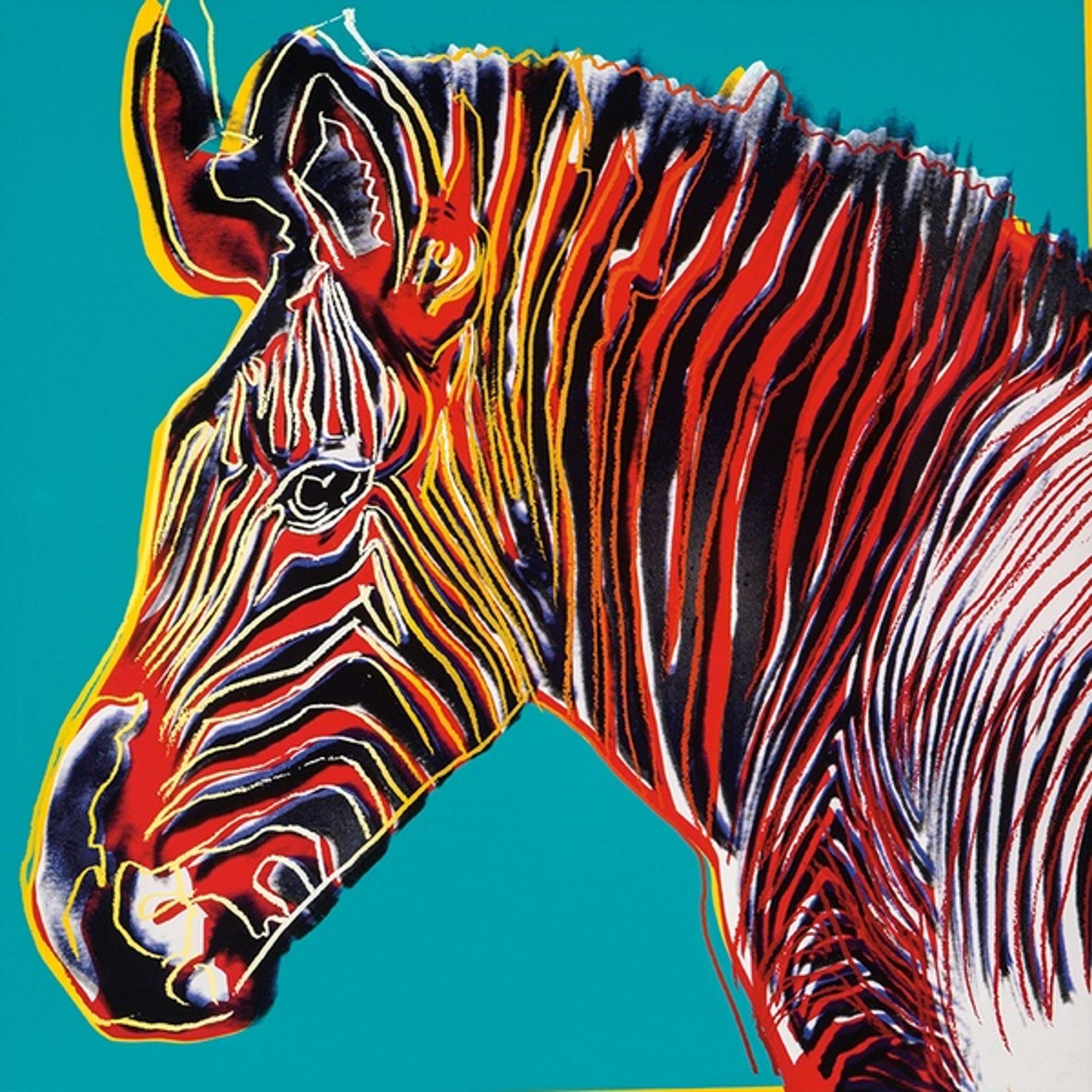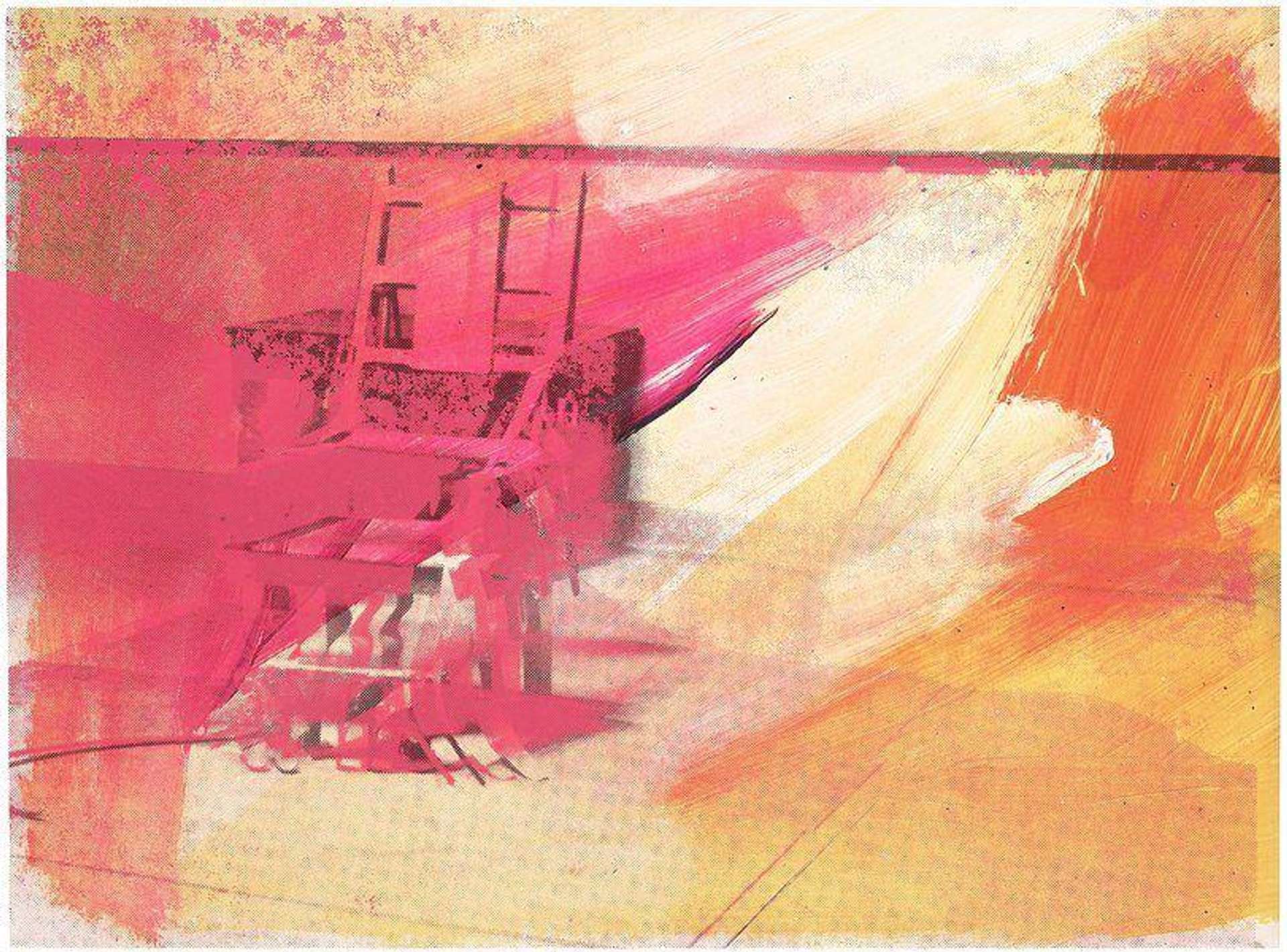 Grevy’s Zebra (F. & S. II.300) © Andy Warhol, 1983
Grevy’s Zebra (F. & S. II.300) © Andy Warhol, 1983
Interested in buying or selling
work?
Live TradingFloor
The Warhol Market is booming, and with it - as with all great investment opportunities - the fakes market. The worst part? They're getting better and better. Our Pop Art Authentication Expert, Richard Polsky is on hand to talk: How to Spot a Fake Andy Warhol
First Impressions
As an art authenticator, I’m hired to “get it right.”
When a work of art is submitted to me, the first impression is often a lasting one. I initially look for what a poker player refers to as a “tell.” A tell is a subtle behaviour that a card player exhibits (that he isn’t aware of) when he examines his hand. A blink or a nervous twitch might reveal how he’s going to bet. In reference to an Andy Warhol print, the tell (that it might be a fake) can vary widely.
Recently, I was shown a Warhol print from the Details of the Renaissance series. This was part of a late group of paintings and prints that Warhol created which were “art about art.” In this case, he quoted a close-up detail from the Sandro Botticelli painting, The Birth of Venus. At first glance, it looked right as rain. Everything was there; from Venus’s flowing tresses to her fine facial features. Yet, something still felt off and I struggled to put my finger on it.
I realised this impression of The Birth of Venus lacked a signature on the front or back. Andy varied where he signed his serigraphs. Some were signed on the front and some were signed on the verso; there was no consistent pattern. The assumption was that it was an esthetic decision on Andy’s part. What’s more, when he did sign a print on the front, he jumped back and forth between signing it within the image itself, and signing it in the lower white margin. After consulting some reference materials, I learned the print should be signed on the front, in the white margin. However, in this instance, I soon discovered that there was no margin! What I determined was that the print had been cut down. The white margin had been sliced away leaving only the image itself. Why this was done remains a mystery to me.
Signatures
The Andy Warhol print market has changed over the years. In more recent times, the onus has been on the buyer to spot fakes from three portfolios in particular: the Myths, Ads, and Endangered Species series. In reference to these prints, an indicator that you are looking at a fake is a lack of a signature. That’s because many of these works were created from the original silkscreens, but were run-off as extras by the publisher — and then sold.
As an art authenticator, my rule of thumb is to determine the intent of the artist. In other words, if Warhol had intended for these additional impressions to enter the marketplace, he would have signed them.
There have also been examples of works from the above series being counterfeited as colour laser prints. Today’s printers have become so sophisticated that the reproductions they produce have become almost indistinguishable from Warhol’s originals. Mind you, these are not perfect copies, but they are good enough to fool most collectors and many dealers. Once again, you want to look for a valid signature, numbering, correct dimensions, and (this cannot be emphasised enough) a logical provenance. As always, dealing with an established online art platform, auction house, or gallery is your best defence.
Numbered Editions vs. Proofs
Another point of contention has been how Warhol prints are numbered. In today’s art market, impressions from the numbered edition, rather than the proofs, have become more desirable than ever. That’s because most Warhol editions are accompanied by a dizzying array of proofs.
Technically, a proof is a trial run for the artist which allows him to decide what the finished edition will look like. This was always an acceptable process and a logical step in completing a print. But over time, publishers got carried away. Today, you can find P.P’s (printer’s proofs), T.P.’s (trial proofs), A.P’s (artist’s proofs), Color Trial Proofs, and more.
When you come across a bogus Warhol print, many of them tend to be proofs. That’s because the forger knows it’s often hard for the buyer to come by the exact number of proofs that were legitimately executed. The Andy Warhol Prints Catalogue Raisonné has plenty of useful information when it comes to edition sizes and proof sizes. However, I recently experienced a situation which demonstrated that even this standard reference tool is not infallible.
The Catalogue Raisonné
I was asked to examine a print from Warhol’s Ladies and Gentlemen series. The imagery features a variety of drag queens who were photographed, during the 1970s, at a nightclub in New York called the Gilded Grape. The prints came in a portfolio of ten different images. There was also a large series of related paintings. While researching the print, the image itself looked absolutely correct. Then I noticed it was numbered as an edition of 250. Yet, a quick perusal of the catalogue raisonné listed it as an edition of 125. Fortunately, I was able to speak with a knowledgeable colleague, who confirmed the correct edition size was 250 and the impression I was looking at was genuine — the catalogue had been at error.
'Bait and Switch'
Absurd as it might sound, sometimes a genuine Warhol print can turn into a fake Warhol print. I was once hired to authenticate a Blackglama (Judy Garland), from the Ads portfolio, that the client was considering buying. There was no evidence it had been copied on a laser printer. The dimensions, numbering, and signature were all correct. Since everything checked out, I gave the work a thumb’s up. Two weeks later, I received a disturbing email. The client went through with the purchase, decided he wanted to resell it at auction, and showed the actual print to a specialist auction house in Europe — who declared it a fake.
Like any art authenticator, I was capable of making a mistake. But in this case, I was confident what I had examined was genuine. I then showed the image to the head of the auction house's print department in New York, who confirmed that it looked right to him. For twenty-four hours, I continued to ponder what could have gone wrong. That’s when it hit me; it was a classic case of “bait and switch.”
Apparently, the seller had sent the buyer an image of an authentic Blackglama, which he agreed to purchase. But when the print was sent to him, a copy had been substituted. When it was shown in person to the European print expert, he could instantly tell that it was a reproduction. Fortunately, the story had a happy ending. The client got his money back from the seller. And I slept better that night.
Read more about art authentication from Richard Polsky here.










